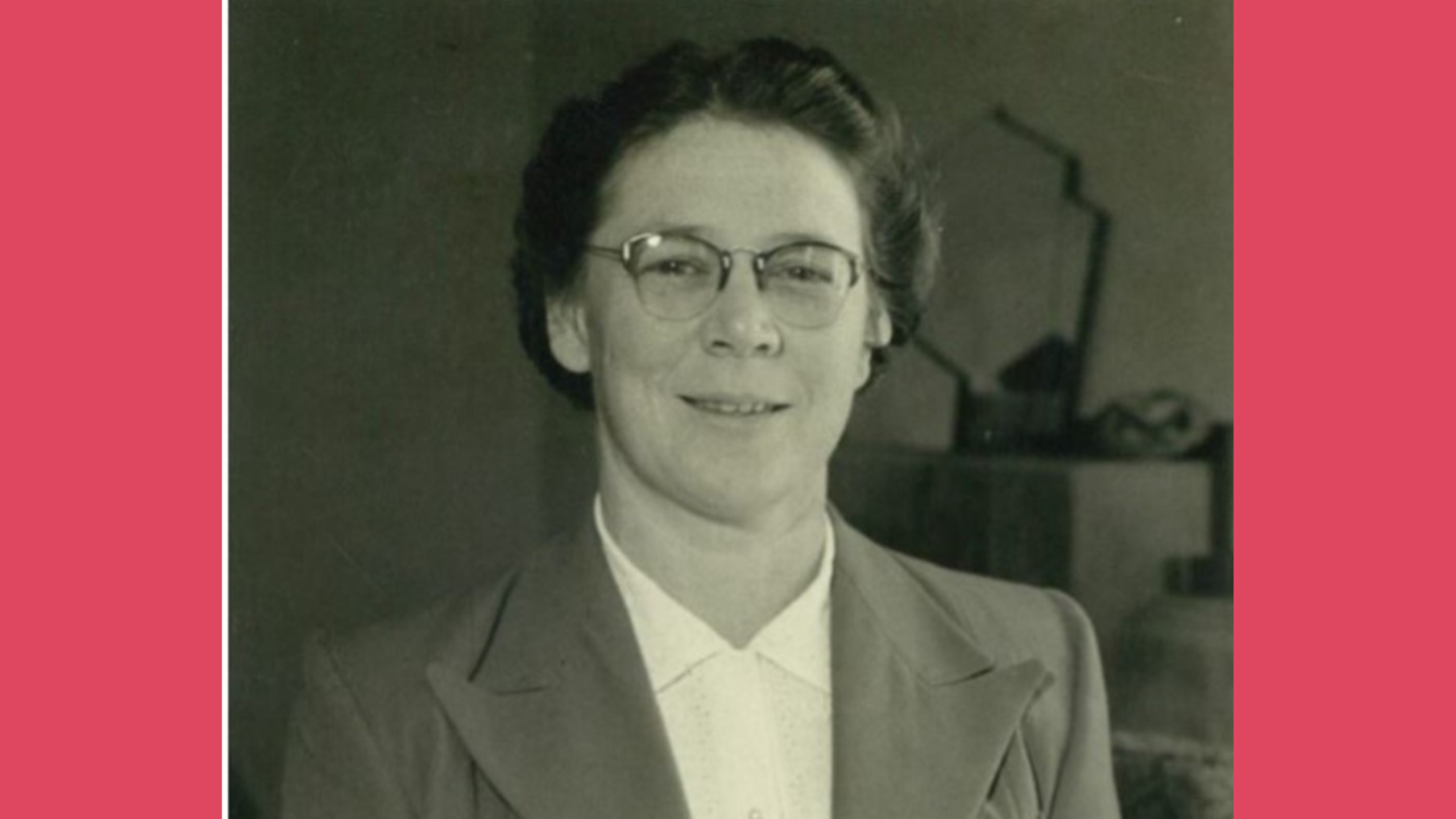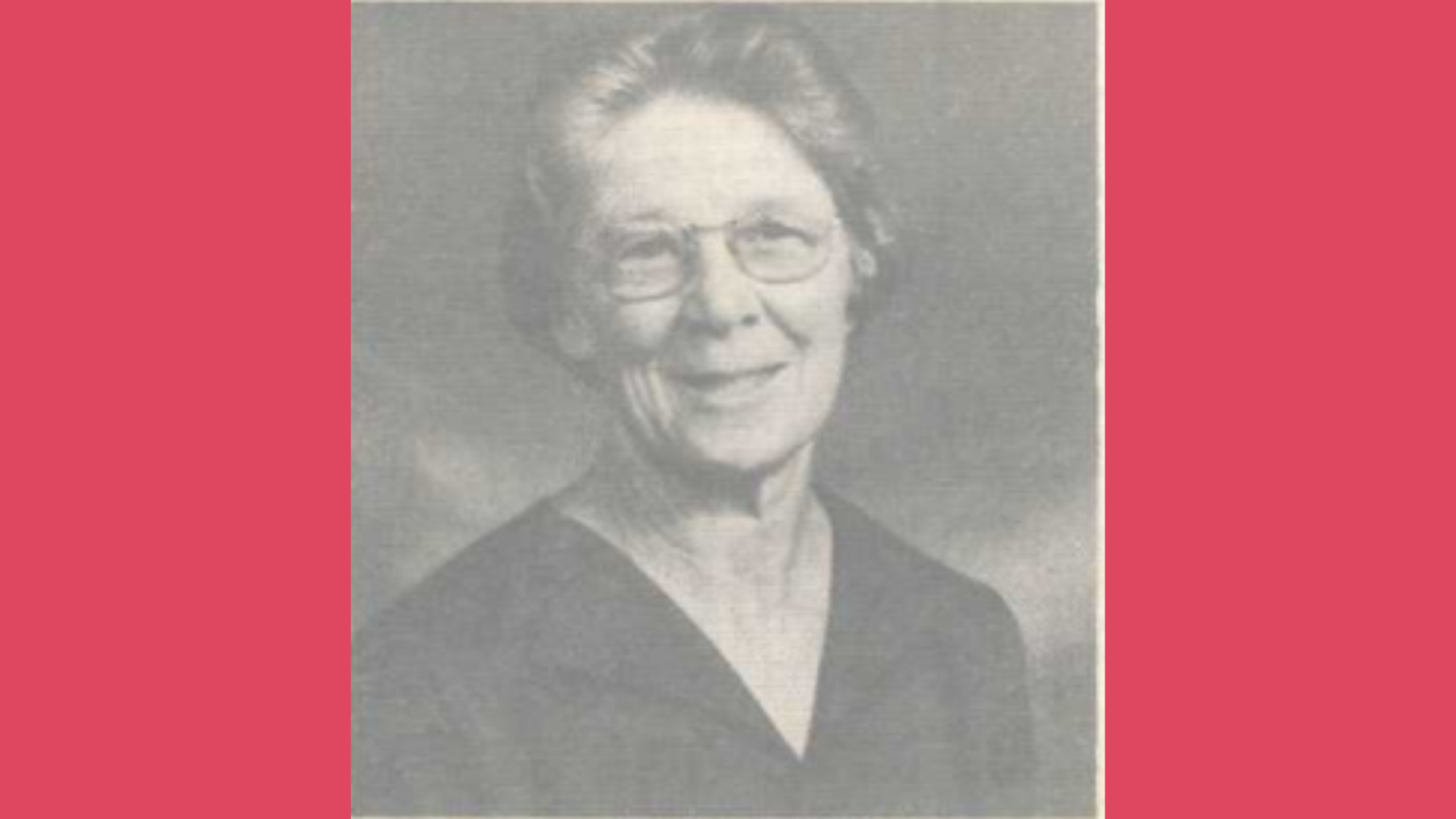
Joan Milner was the first Baptist full-time worker among Mu0101ori. She was based in Lower Waikatou2014Waiuku and Pukekohe and marae nearby.
Joan Milner, born in 1921 to Christian parents working in the King Country, had no easy start to life. During the Great Depression of the 20u2019s, her family left their farm and went first to Gisborne, and then on to Napier u2013 where they experienced the Napier earthquake of 1931. Joan remembered her father saying, u2018Our little church has gone!u2019 A few years later the family moved on to Wellington. It was at a Crusader Camp in Wellington that Joan, now about 14, committed her life to Christ.
After leaving high school where she studied for two years, Joan took on office work and accounting. She became heavily involved in church activities at Island Bay Baptist such as Sunday school, Bible class, Girlsu2019 Life Brigade, home visiting, street evangelism, and public speaking (Christian Alliance of Women and Girls). As a girl, and for decades after, she consistently read scripture using Scripture Union notes.
At Baptist Assembly in 1953 Joan heard a call for workers among Mu0101ori. Joan was accepted and began in November 1954. She spent two months learning at the United Mu0101ori Mission in Auckland. This laid a solid foundation that helped Joan considerably in understanding kawa in her initial years, particularly in visiting. She also attended and offered consolation at many tangi and poukai.
Sharing the Good News to Women and Children
Joan reached out naturally to children in her visiting. She told of how she started a new work due to childrenu2019s responsiveness:
Once Des Jones [the other full time worker] introduced me to a home but the parents were out. When I called next only the children were at home but they were friendly, so, I took courage. I sat on the steps, taught some choruses and told a Bible story.
Next time I called the mother asked if I could start a Sunday School in their home. That was Buckland, three miles from Pukekohe and after a few years the 30 or so children overflowed the room and we transferred to the Pukekohe Mu0101ori (now Hill) School. This worked extremely well for it gave an opening into many, many homes. When Sister Dora Whitehead (later Crown) arrived, the work was further expanded. I began activities in Tuakau as well as assisting in Pukekohe.u2019
One of the stories from early in Joanu2019s work showed her deep commitment to loving even a single child. At a Sunday School run by two Pukekohe families at Tahuna Pa, near Waiuku, numbers had gone down to one child. People were asking, u2018What do we do now?u2019 The tou2013ing and fro-ing added up to 70 miles for that one child. They asked, u2018Do we run the car seventy miles for one child? Is it worth it?u2019 Joan and the families answered, u2018Yes, one person is precious is Godu2019s sight,u2019 so they kept going there. When Christmas came, Joan and friends organised a party, inviting everyone in the district. Lots of people came to that Tahuna Pa party. The Mu0101ori Christians and Joan were astonished, and even more when people continued to come to services. Godu2019s work grew.

In the Waiuku area Joan took responsibility for womenu2019s meetings and visiting in Pukekohe and Tuakau. Initially, Joan had a driveru2019s licence but no car. She learned to ride a bicycle, balanced her flannel-graph board, and pedalled to Sunday School in a small settlement. Baptist work had no churches in some of the rural areas, so Joan became welcome on marae and in homes.
Soon Joan had Mu0101ori women leaders alongside her, including Mrs Sherman and Mrs Pukepuke. These two had committed their lives to Christ at a Roland Hart Crusade in 1954, and Joan prepared them for baptism. During that process they had studied the Bible together, and enjoyed it so much, that they decided to carry on. Soon other women wanted to join, and eventually Joan held womenu2019s study groups in three placesu2014 Tauranganui Pa, Te Kohanga and Tuakau. The age range was 18 to 60-ish, in a hall or a home, babies and all, starting with a cup of tea and a u2018Sing-alongu2019. Numbers varied from 5 to 10, some were Christians, some seekers. It took up to an hour for Joan to collect people in the van.
Later, for hundreds of meetings, Joan packed equipment, drove, picked up participants, directed, spoke, counselled, packed up and delivered her passengers homeu2014all with a hampering difficulty in hearing. u2018I used filmstrips of Bible characters, often a great attraction in home meetings,u2019 Joan reported. u2018I took the opportunity of Christmas parties and Sunday School anniversaries to reach out to parents.u2019 Joan used whatever means she could join in with, such as: Billy Graham films and phone-lines to a local hall; visits by Ivor Powell and Roland Hart; young peopleu2019s camps. Youth loved them. She told how, as one camp finished, somebody asked a van-load of departing young people, u2018Why are you crying?u2019 u2018We donu2019t want to go home,u2019 they answered.
She told more about the result of the preaching visit of the Welsh evangelist, Rev. Ivor Powell in January 1956. She and the Mu0101ori leaders were thrilled to have him visit the marae and meet and speak with the people. Many were drawn by the occasion and went to the meeting in Manurewa, and several Mu0101ori people of note were converted. Then Joan and Des Jones had the task of discipling new believers. They chose to have an all-age Sunday School, since ferrying children about at different times from parents was impracticable. Joan remembered that the singing was amazing, and that people listened with rapt attention, joined enthusiastically in quizzes, and took great interest in object lessons and Bible teaching. So many learned and felt the Bible truths. The progress was remarkable. They started week-night cottage meetings that became a vital part of outreach. Things went so well that when they started a Youth Group more and more wanted to join. The Womenu2019s Bible Study also flourished.
Joan prayed and asked others to pray for the work that was happening. She also sold Christian literature, and received, sorted, priced and sold quantities of 2nd hand clothes for the benefit of her friends on the marae.
Developing Fellowship
The ministry was over a wide area. Waiuku marae was 24 km from Pukekohe, but people were happy to travel to the Pukekohe church for the monthly combined service and for other special occasions. After a while they felt they belonged and spoke of u2018our churchu2019. Some families later became absorbed in Pukekohe youth clubs, Sunday School and womenu2019s meetings.
Sometimes it was not so smooth. While country people from the same marae and iwi knitted closely and worked happily together, those in the towns knew one another less well. So those from the four winds marae, Nga Hau e Wha, did not feel such strong unity with the town church. Joan and others commenced services in a local Mu0101ori hall and worked hard at encouraging newer Christians into fellowship with church folk.
Joan felt that one of the great strengths of the work was when they gathered as a whole Fellowshipu2014Pukekohe, Waiuku and Lower Waikato. u2018We held a One-Day Hui three times a year on the various marae. In later years the National Mu0101ori Hui became a great strength in the work.u2019

Looking back
At times, the work was hard and sad. Joan once commented, u2018Yes, there was the pain. Some people slipped back into their old ways. I had to go to Court with some who were in trouble with the law. I have sat by the coffin of one we had learned to love.u2019 But this was nothing to the joy of seeing folk responding to Jesus, the joy of knowing the leading of the Holy Spirit when visiting and counselling people, the joy of seeing high calibre Mu0101ori take leadership positions themselves.
Joan Milner gave 23 years of her life to the people and retired with poor health in 1977 to care for her mother. But she remained in contact with people and was delighted to later see Mu0101ori leaders pastoring in the Waiuku Fellowship, leading the people through purchasing their own building, forming a constitution, appointing officers to become an official church in the Baptist Union of New Zealand. The church joined the Baptist Union as a high point of Baptist Assembly 1990. At that time the NZ Baptist reported: u2018Her hair now grey-white, Joan Milner stood before Assembly alongside a good sized group of people from Waiukuu2026 Appropriately Joan wore across her shoulders the korowai given to her by the Tainui people of the lower Waikato as a tribute for the work she has done in that area.u2019
Based on articles in NZ Baptist: September 1961, November 1968, September 1990, December 1990, July 1992, June 2011. Joan was also frequently mentioned in u2018Churches in Actionu2019 as she was requested so many times to speak to missionary prayer groups and womenu2019s groups.


